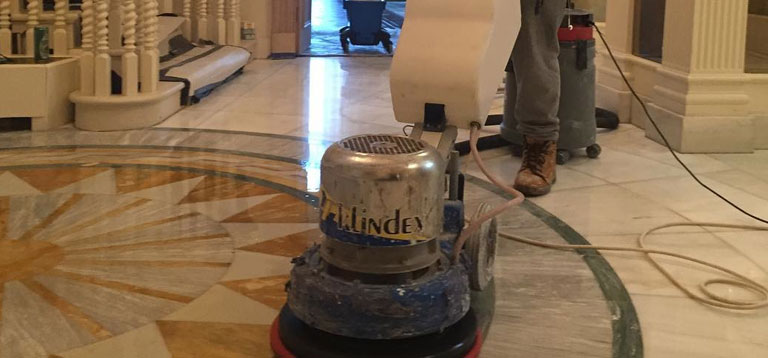Last Updated on May 24, 2019 by Royal Stone Care
As a material, marble is a timeless classic, lending any room it’s found in a feeling of true luxury.
Here, we share 10 facts about this porous stone that may be news to you:
-
It hails from the mountains
Marble is found in mountainous areas of the US, Europe (especially Italy), Asia and South America. It’s formed over millions of years when, under heat and pressure, limestone becomes denser and harder. This process is called recrystalisaton. You may also not realise that marble is found in the earth’s crust’s oldest layers.
-
Marble means ‘shining stone’
This substance takes its name from the Greek words ‘marmaros’, which means shining stone, and ‘marmalerein’, meaning ‘to shine’.
-
No two marble slabs are identical
Like fingerprints and snowflakes, no two slabs of this stone will be the same. That’s because its veining, the result of mineral deposits, makes each piece unique.
-
Carrara is the most used kind of marble
Carrara is the most commonly found kind of Italian marble, and it’s named after the region it comes from. It tends to have a grey background and light grey veining that can look quite soft and feathery. Other popular marble varieties from Italy include Statuario and Calacatta.
-
Some of the world’s most important artworks are made from it
Think the Lincoln Memorial, Michaelangelo’s David and, of course, the Elgin Marbles. This stuff has been chosen for its luxury and purity since the earliest times. What’s more, the surface’s slightly translucent appearance lends figures of human statues realism and depth.
-
Marble pieces are unique because of their impurities
Marble doesn’t just come in grey or white – black, yellow, green, pink and gold marble can all be found. These rich colours and veining are the result of impurities found during the recrystallisation process, including silt, sand and clay.
-
You may even brush your teeth with it!
Marble is a source of calcium carbonate, which has long been added to some paints and even toothpaste in powder form. It can act as a gentle abrasive.
-
Only use cleaners you’d put on your hands
Marble is not heat resistant, it ‘etches’ easily and chips if struck by something heavy. One rule of thumb is never to use anything on this stone that you wouldn’t happily put on your own hands. So take care to use cutting boards, and be wary when using acidic foodstuffs like lemons or tomatoes.
As a final couple of pointers, bear in mind that a little marble can go a long way – you don’t need to fit your whole kitchen or bathroom out in it! Think one (smallish) countertop in the kitchen, or vanity unit in the bathroom, and a marble fireplace in the living room, or maybe even just a fireplace surround.
Secondly, while marble is prone to scratches and nicks, part of the charm is that it takes on a patina over years of use, and its colouring changes over time as oils from the skin get on it as it’s touched. Embrace all this, and love your marble for its imperfections!
How we can help
At Royal Stone Care, we specialise in marble care for a wide range of clients. Talk to us about marble cleaning and restoration. Whatever your business premises or type of residential property, if you’re based in the London area, we can help with marble countertops, fireplaces, floors and more. With experienced, qualified staff, extensive insurance and a range of tried and tested marble polishing techniques, whether you need one-off marble chip repair or a regular deep clean. Contact us for your free quote today.

